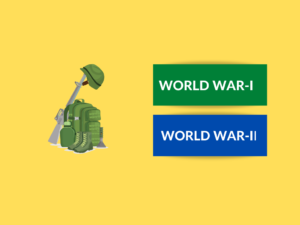Introduction:
Nazism and Fascism are ideologies that emerged during the early 20th century and played significant roles in shaping world events. In this article, we will explore the differences between Nazism and Fascism, the context of their ascension, examples of their implementation, and their uses. By examining their defining characteristics, we can better understand the impact these ideologies had on history.
What is Nazism?
Also known as National Socialism, Nazism was the ideology embraced by Adolf Hitler and the Nazi Party in Germany. It arose in the early 1920s and gained prominence in the 1930s, ultimately leading to World War II.
Examples of Nazism:
– Implementation of racial superiority theories, leading to the persecution and extermination of millions during the Holocaust.
– The establishment of a totalitarian state with absolute control over the economy, media, education, and social life.
What is Fascism?
Fascism is a political ideology that originated in Italy during the early 20th century and was propagated by Benito Mussolini. It gained traction in the 1920s and 1930s, promoting authoritarian rule, nationalism, and suppression of political dissent.
Examples of Fascism:
– Implementation of single-party rule, centralizing power in the hands of the dictator.
– Suppression of opposition through censorship, propaganda, and violence.
Differences Table:
| Difference Area | Nazism | Fascism |
|---|---|---|
| Primary Ideological Leader | Adolf Hitler | Benito Mussolini |
| Country of Origin | Germany | Italy |
| Emphasis on Race | Given utmost importance, promoting Aryan supremacy | Less emphasis on race, with a focus on the nation as a whole |
| Economic Policy | Mixed economy with elements of state control | Capitalistic economy with state control to serve national interests |
| Attitude towards Religion | Allowed religious freedom but sought to control religious institutions | Co-opted religion for political purposes without suppressing religious freedom |
| Role of the State | Strong central state control over every aspect of society | Strong central state control, but with emphasis on the nation rather than complete societal control |
| International Expansion | Sought to create a global empire and expand territorial control | Aimed to regain territories lost in World War I and expand influence within Europe |
| Focus on Class | Class distinctions were weakened in favor of racial hierarchy | Some populist rhetoric but class distinctions remained intact |
| Social Policies | Policies focused on promoting the “ideal” Aryan society and suppressing dissent | Efforts to promote national identity while preserving social hierarchy |
| Legacy | Nazism is primarily associated with Germany and the Holocaust | Italian Fascism laid the groundwork for future far-right and nationalist movements |
Conclusion:
In conclusion, Nazism and Fascism, although sharing similarities due to their totalitarian nature, have key differences in their origins, emphasis on race, economic policies, and attitude towards religion. While Nazism is intrinsically tied to Adolf Hitler and Germany, Fascism originated in Italy under Mussolini’s leadership. Nazism’s racial focus and implementation of the Holocaust distinguish it from Fascism, which emphasizes the nation. Understanding these nuances helps us comprehend the profound impacts these ideologies had on societies and histories.
People Also Ask:
1. What is the main difference between Nazism and Fascism?
Nazism is primarily associated with Adolf Hitler and Germany, focusing on Aryan racial superiority and the Holocaust. Fascism, on the other hand, originated in Italy under Benito Mussolini, emphasizing the nation and promoting authoritarian rule.
2. How did Nazism and Fascism impact World War II?
Nazism’s aggressive expansionist policies led to the outbreak of World War II, as Hitler sought to establish a global empire. Fascism, while contributing to the pre-war tensions, did not play as significant a role as Nazism in starting the war.
3. Were there any fascist movements outside of Germany and Italy?
Yes, there were fascist movements in various countries, including Spain under Francisco Franco, Romania under Ion Antonescu, and even fringe movements in other parts of Europe and the Americas.
4. How did the international community respond to Nazism and Fascism?
The international response varied, with some countries appeasing or even collaborating with the fascist regimes, while others opposed them. It was not until the atrocities of World War II, particularly the Holocaust, became apparent that the full extent of the horrors of Nazism was recognized.
5. Are there any remnants of Nazism or Fascism today?
Although Nazism and Fascism were largely dismantled after World War II, there are still far-right and nationalist movements that bear some resemblance to these ideologies. However, modern societies generally reject the extremism associated with Nazism and Fascism.


